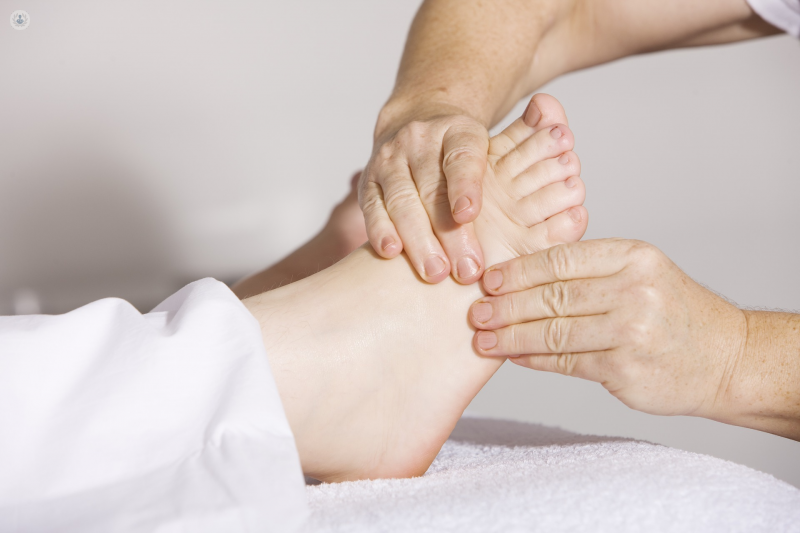Deal with your heel! A guide to how heel pain can be treated
Autore:Pain in the heel can be a minor hindrance or a serious problem. In previous articles, we examined the main causes of heel pain – plantar fasciitis and Achilles tendinopathy. But how do you relieve heel pain? What treatments can be recommended? Foot pain expert Mr Paul Hamilton brings you the conclusion of his series on heel pain:

How to heal the heel
First, the situation should be assessed by a doctor, who should tailor treatment to each individual case. Whether you are an athlete or live a more sedentary lifestyle, the aim of a personalised treatment plan is to get you back to your previous level of activity as quickly as possible.
Initial treatment should always involve physiotherapy focusing on calf stretches and possibly insoles. In some individuals a formal gait analysis with custom insoles may be appropriate. This will be successful in the majority of patients. If there is failure to progress after two to three months we can offer several treatments including injections, extracorporeal shockwave therapy and surgical stretching of the calf. These can be used in combination if required.
Specific treatment:
Physiotherapy
Although stretching alone can help treat these conditions, we recommend assessment and treatment via a trained physiotherapist who can guide you through appropriate exercises and rehabilitation, not only to treat the condition, but also to prevent recurrence. They may also be able to assist you in providing simple insoles, night splints, guidance on shoe wear and advice on activities you should be undertaking and avoiding.

Podiatric assessment
For those in need of more custom made insoles an assessment can be made by a podiatrist. The consultation usually includes formal biomechanical evaluation with gait analysis.
Extra-corporeal shockwave therapy
Shockwave therapy involves three sessions at one to two-weekly intervals lasting about 5-10 minutes. It is thought to act by creating an inflammation that promotes healing of the injured tissue. You may experience some bruising, numbness, swelling and redness after each session. Strenuous exercise should be avoided for 48 hours. It is recommended to continue physiotherapy for this time.
Injection therapy
Injections can be used to treat both plantar fasciitis and Achilles tendinopathy. Although both use a small amount of steroids they are thought to act in different ways. Strenuous activity should be avoided for six weeks if you have undergone an injection around your Achilles. It is recommended to continue physiotherapy for this time.
Surgical calf stretching
In cases where the calf muscle is very tight then shockwave therapy or injection therapy may not work alone. In these cases then surgical calf stretching may be recommended. This involves a day case procedure where a small incision is made behind the knee. You will be able to walk normally out of hospital and can continue physiotherapy at two weeks.
Surgical treatment of Achilles tendinopathy and plantar fasciitis
If all else fails, surgery on the Achilles tendon may be an option. This can include stripping the Achilles tendon, removing the damaged tendon or transplanting another tendon to help the area to heal and improve function.
Very rarely, releasing the plantar fascia via surgery may be an option discussed during the consultation.
It could take several months to fully recover from either procedure and a cast will be necessary.
Take care to consult your doctor or a specialist is you are experiencing heel pain or ankle pain.


